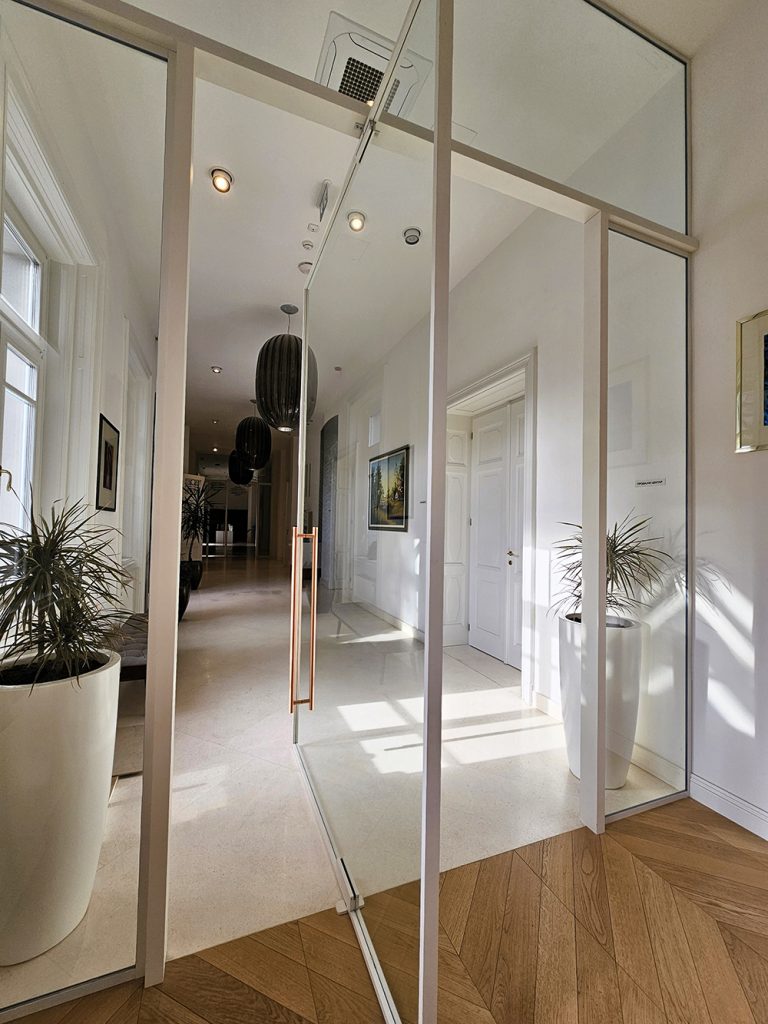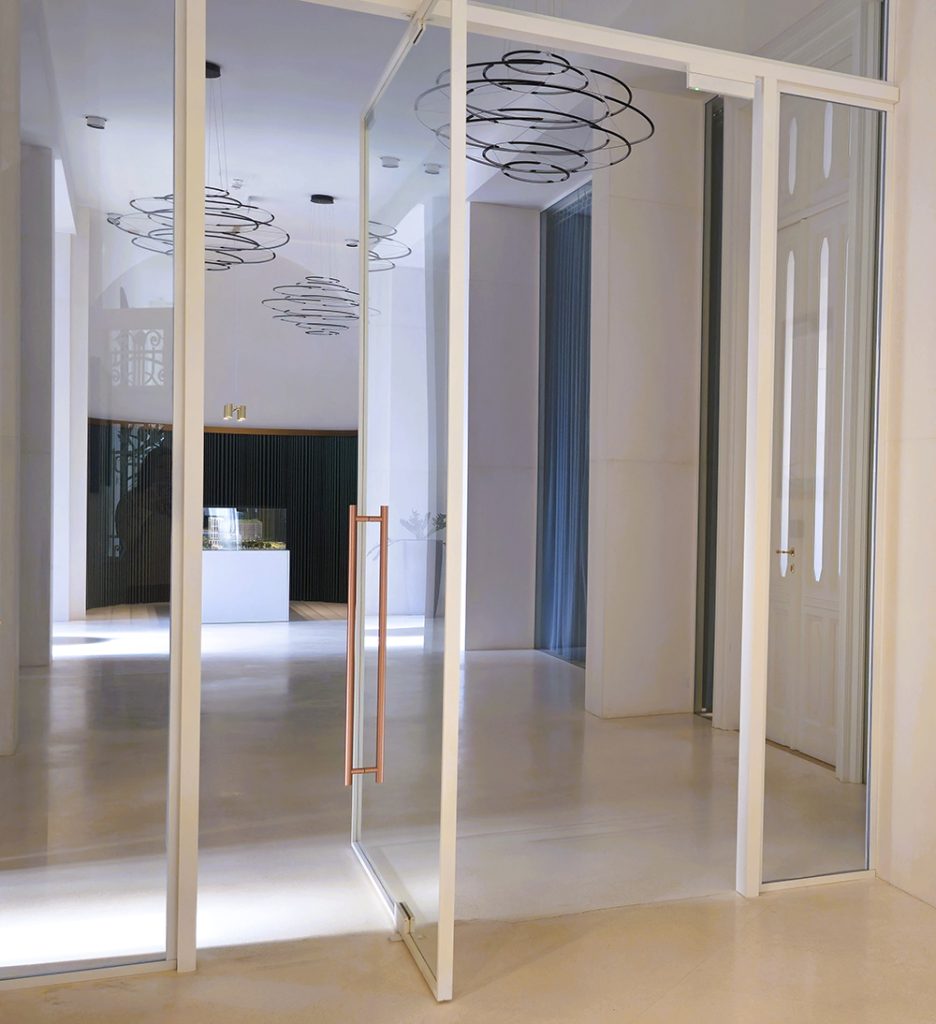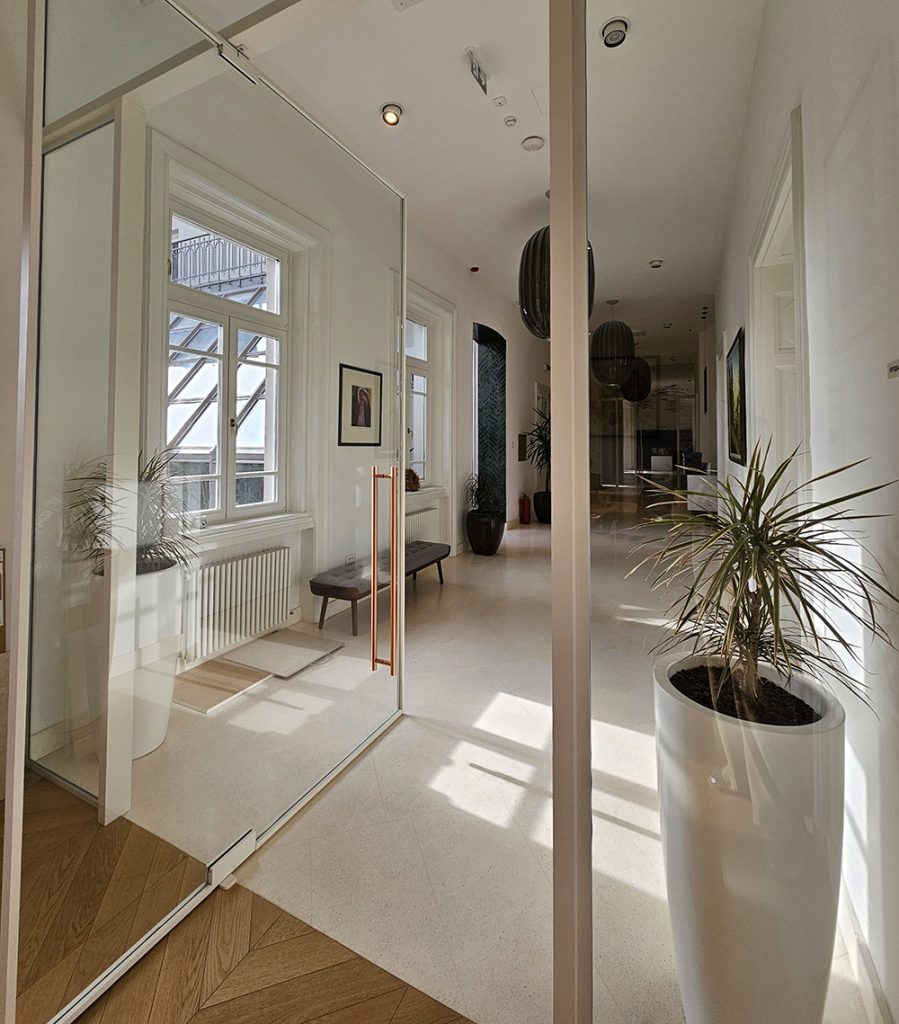Glass Pivot Doors – A Modern Architectural Feature

Our company was engaged by the investor Inobačka d.o.o. to install glass systems in a commercial space located on Železnička Street, a building that is under protection and of historical significance.
In recent years, glass pivot doors and glass wall surfaces have become one of the distinctive elements in designing commercial spaces. Their clean lines, minimalist form, and the ability to create a seamless connection between spaces make them not only functional but also striking architectural features.
Unlike traditional hinged doors attached on the side, pivot doors rotate around a central axis installed at the top and bottom of the door. This mechanism allows the door to open smoothly and elegantly around its axis. When made of glass, pivot doors provide a modern and sophisticated look, maximizing light transmission and emphasizing the openness of the space.

Glass pivot doors can be transparent, frosted, tinted, or feature various patterns, giving architects the freedom to balance privacy, aesthetics, and natural lighting. For this project, doors with clear glass were installed to maximize the amount of natural light entering the space.
Why Have Glass Pivot Doors Become Popular?
Architectural Impact
The simplicity of the pivot mechanism allows for large, uninterrupted door surfaces—perfect for showcasing glass. The result is a clean, minimalist look that easily fits into contemporary architectural styles.
Light and Space
Glass pivot doors let natural light flood interior spaces, blurring the boundaries between inside and outside. This sense of openness is one of the most sought-after qualities in modern design.
Minimal Mechanics
Pivot systems often require fewer visible components than traditional doors, contributing to a sleek, minimalist appearance.
A Sense of Luxury
The door’s movement is elegant and distinctive. Unlike conventional doors that swing open, pivot doors rotate, giving an impression of quality and sophistication.
Challenges in Installing Oversized or Non-Standard Pivot Doors
While pivot doors offer impressive visual and functional benefits, their installation—especially for larger or unusually sized doors—presents technical challenges.

Some of the Challenges When Installing Glass Pivot Doors:
Weight and Balance
Glass is heavy, especially for large door dimensions. The pivot mechanism must be precisely engineered to withstand the load and ensure long-lasting smooth operation. Reinforced components and additional support in the floor and ceiling are often required.
Structural Integration
In existing buildings or irregular openings, installing a pivot mechanism may require reinforcing floor and ceiling structures, particularly for floor-to-ceiling doors.
Sealing and Thermal Insulation
For larger doors, especially exterior ones, precise installation is essential to ensure proper sealing and prevent air leakage and heat loss.
Type and Safety of Glass
Larger doors require laminated or tempered glass, and often double glazing for improved thermal insulation. Ensuring safety while maintaining visual lightness is a complex task.
Custom Manufacturing
Each door with non-standard dimensions requires custom-made glass and tailored frames, which can affect the cost and production time.
Glass pivot doors represent a perfect blend of elegance and precise engineering. As modern trends emphasize light, openness, and minimalism, these doors are becoming an increasingly popular choice for architects and property owners seeking a striking yet functional feature.
However, for a flawless installation—especially with larger or unusual dimensions—careful planning, expert installation, and high-quality materials are essential. When all these are achieved, glass pivot doors can completely transform a space, delivering a timeless and modern look that is hard to ignore.
